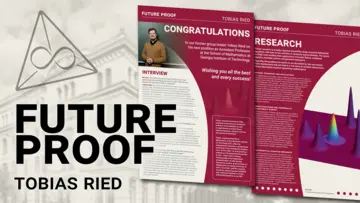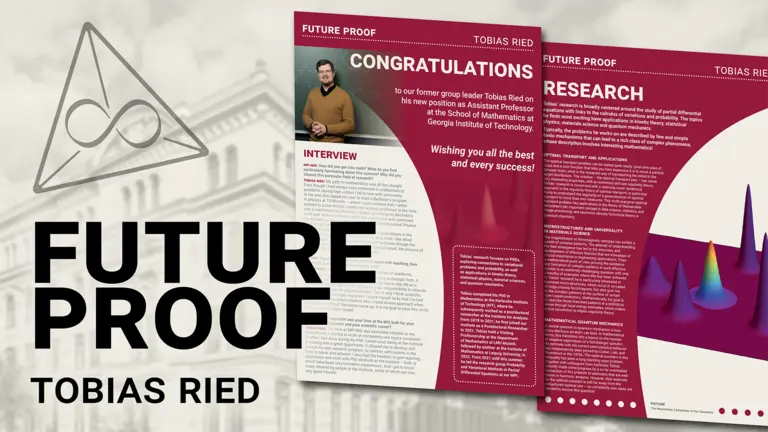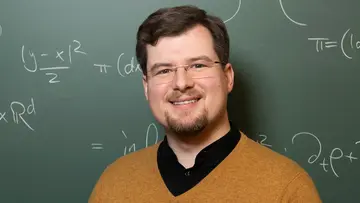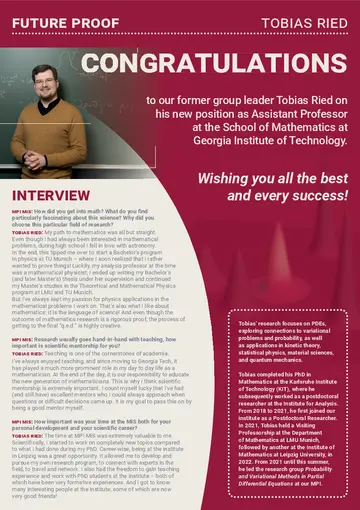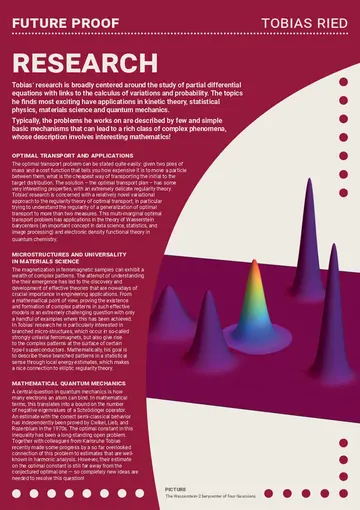Interview
MPI MIS: How did you get into math? What do you find particularly fascinating about this science? Why did you choose this particular field of research?
Tobias Ried: My path to mathematics was all but straight. Even though I had always been interested in mathematical problems, during high school I fell in love with astronomy. In the end, this tipped me over to start a Bachelor’s program in physics at TU Munich – where I soon realized that I rather wanted to prove things! Luckily, my analysis professor at the time was a mathematical physicist; I ended up writing my Bachelor’s (and later Master’s) thesis under her supervision and continued my Master’s studies in the Theoretical and Mathematical Physics program at LMU and TU Munich. But I’ve always kept my passion for physics applications in the mathematical problems I work on. That’s also what I like about mathematics: it is the language of science! And even though the outcome of mathematics research is a rigorous proof, the process of getting to the final “q.e.d.” is highly creative.
MPI MIS: Research usually goes hand-in-hand with teaching, how important is scientific mentorship for you?
Tobias Ried: Teaching is one of the cornerstones of academia. I’ve always enjoyed teaching, and since moving to Georgia Tech, it has played a much more prominent role in my day to day life as a mathematician. At the end of the day, it is our responsibility to educate the new generation of mathematicians. This is why I think scientific mentorship is extremely important. I count myself lucky that I’ve had (and still have) excellent mentors who I could always approach when questions or difficult decisions came up. It is my goal to pass this on by being a good mentor myself.
MPI MIS: How important was your time at the MiS both for your personal development and your scientific career?
Tobias Ried: The time at MPI MiS was extremely valuable to me. Scientifically, I started to work on completely new topics compared to what I had done during my PhD. Career-wise, being at the institute in Leipzig was a great opportunity. It allowed me to develop and pursue my own research program, to connect with experts in the field, to travel and network. I also had the freedom to gain teaching experience and work with PhD students at the institute – both of which have been very formative experiences. And I got to know many interesting people at the institute, some of which are now very good friends!
